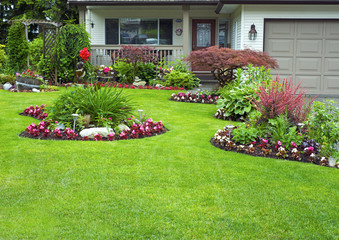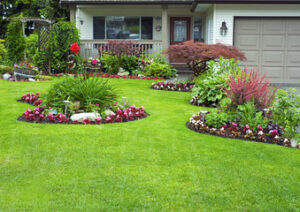Collectors know the feeling of holding a memory. Cards, signatures, and snapshots—each piece has a story. But keeping these treasures safe isn’t simple. That’s where binders come in, especially the toploader kind.
The appeal is in protection without sacrificing visibility. Toploader binders don’t just hold—they elevate. Each pocket becomes a display, not just a slot. It turns collecting into curating. Keep reading the article below to learn more about Evoretro Toploader Binder.
Gone are the days of brittle pages and flimsy sleeves. These binders combine solid build with clear presentation. They’re tougher, sleeker, and designed to impress. Not just for function but for pride.
The rise of niche hobbies made this evolution necessary. Trading cards, film cells, photo prints, even ticket stubs. All are now preserved in a format once ignored. The toploader style stepped in quietly but changed everything.
Collectors didn’t just want space—they wanted status. The binder became a showcase, not a drawer substitute. And it made every page turn a moment. Viewers don’t just see—they admire.
Some use it for nostalgia; others use it for business. Whether reliving childhood or planning resale, the binder fits. It handles value in many forms. Emotion, investment, or both.
A silent trend has formed around binder customization. Labels, dividers, and section themes are common now. People create stories out of their collections. Each binder becomes a timeline in plastic.
The top-loading design prevents accidental drops. Gravity works in its favor. Cards stay put even when jostled. It’s one of the reasons serious collectors made the switch.
Photographers started using them too. Not for prints—but for film negatives. Each clear sleeve becomes a catalog of captured light. A clever twist no one predicted.
Some have turned these binders into travel companions. Safe inside backpacks, they bring collections on the go. Conventions, meetups, and pop-ups now welcome portable archives. It’s protection and presentation on the move.
Youth collectors are shaping how these binders are used. They tag sections with memes, themes, or color codes. It’s less about rigid order and more about personality. Structure is still there—but it’s playful.
The structure itself has evolved quietly. Reinforced spines, weather-resistant covers, flexible page inserts. These improvements came from listening to the community. Feedback is shaping function.
Retailers now offer bundles with pages and cases. It’s a complete setup from the start. No more hunting for matching parts. Convenience meets curation.
Collectors of fragile items praise the durability. Even paper-based or laminated collectibles fit comfortably. There’s enough tension to hold, not crush. The balance is subtle but crucial.
Design lovers enjoy the modern aesthetics. Minimalist fronts, magnetic closures, smooth finishes. These aren’t clunky booklets—they’re statements. Sitting one on a shelf adds to the room.
Digital collectors are jumping into physical formats again. NFTs, screenshots, and game assets are being printed. Stored in binders, they bridge digital and real. It’s a hybrid world, now with pages.
Artists have begun to use these binders as portfolios. Sketches, stickers, hand-cut art slides in securely. Each sheet tells a visual journey. And they’re easy to update anytime.
Traders value the easy access. No fumbling, no static-filled sleeves. Just flip, pull, and inspect. It speeds up exchanges and builds trust.
The interior layout is getting more thoughtful. Spacing, page count, and even transparency levels are refined. The binder is becoming as curated as the cards it holds. Not just a tool, but part of the collection.
Community events now include “binder showcases.” People compete for the most creative layouts. Some use lighting or pop-up tags. It’s collecting, turned into art.
Conservation experts have started noticing. Archival quality materials are now expected. Acid-free sleeves, UV protection, non-stick surfaces. The standard has quietly risen.
Content creators often use these binders in unboxing videos. Cards go from pack to pocket in one motion. It adds drama and precision. Viewers love the click of safety.
Binders also act as emotional anchors. Some hold memories of people or moments. They become personal museums. Not everything in them is about value.
Secondary markets for customized binders are emerging. Artists and crafters design covers, zippers, even bookmarks. The outer look becomes as unique as the contents. Identity meets hobby.
Limited-edition sleeves inside add exclusivity. Some binder sets are now collectibles themselves. A binder that holds collectibles becomes a collectible. It’s a strange but satisfying loop.
Collectors often document their binders like books. They name them, log them, and even photograph full pages. It adds structure to passion. And helps keep everything tracked.
Innovators are exploring biodegradable materials. There’s interest in green collecting. Eco binders might be next. Preservation without pollution is the goal.
There’s also a shift toward inclusive designs. People with disabilities are demanding easier handling. Lightweight builds, wider rings, textured covers. Accessibility is the new frontier.
The binder’s role in education is growing too. Teachers use them for interactive learning. Students collect flashcards, maps, or progress logs. It becomes a learning journey in physical form.
Even therapists find value in binders. Clients create visual timelines using personal mementos. Turning trauma into order, chaos into chronology. The binder becomes a healing space.
There’s a meditative side to organizing. Arranging cards, flipping pages, labeling rows. It’s mindfulness through motion. A way to feel calm while staying productive.
Collectors now keep backup binders. One for daily handling, another for long-term safety. Some rotate displays monthly. It keeps interest alive.
Photographers use them to show proof-of-work. Not all clients want digital previews. Tangible portfolios still matter. The binder fills that need beautifully.
The physicality of binders resists the trend of everything going digital. People crave the real, the tactile, the held. There’s something about touch that memory respects. It stays longer in the hand.
Innovators are now adding QR code slots. Cards that link to video origins or artist stories. The binder connects object to narrative. Static becomes interactive.
Workshops teach people how to design pages. It’s become an art form of its own. Layout, balance, color theory—all in a plastic sleeve. It’s like scrapbooking for modern collectors.
Collectors sometimes seal binders permanently. Heat shrink or locked casing keeps contents untouched. Like a time capsule of taste. Intended for future eyes.
There’s even growing interest in binder vaults. Storage boxes that control humidity and light. Keeping collections at museum-level safety. The line between hobby and heritage blurs.
Newcomers often don’t understand the hype. But once they start filling pages, it clicks. Every pocket becomes a canvas. The binder starts to speak.
It’s no longer just storage. It’s statement, ritual, identity, and strategy. A collector’s journey, framed in plastic. And the best part is—it’s never really finished.

